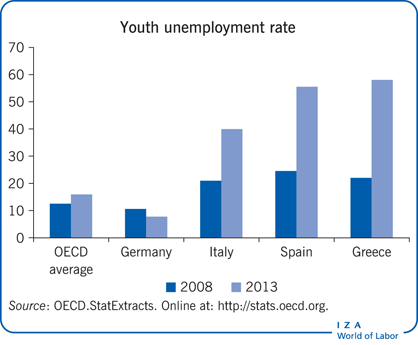Elevator pitch
Reducing youth unemployment and generating more and better youth employment opportunities are key policy challenges worldwide. Active labor market programs for disadvantaged youth may be an effective tool in such cases, but the results have often been disappointing in Organisation for Economic Co-operation and Development (OECD) countries. The key to a successful youth intervention program is comprehensiveness, comprising multiple targeted components, including job-search assistance, counseling, training, and placement services. Such programs can be expensive, however, which underscores the need to focus on education policy and earlier interventions in the education system.

Key findings
Pros
Unemployed youth are a population at risk in many countries.
The average youth unemployment rate is twice the overall unemployment rate in most OECD countries.
Labor market programs that enhance human capital, such as training programs, can be an effective tool for increasing employment opportunities for disadvantaged youth, particularly in the long term.
Comprehensive labor market programs combining several components—job-search assistance, counseling, training, and placement services—can be effective.
Cons
Training and other active labor market programs for youth are frequently not effective in bringing them into employment in the short term.
Restrictive labor market institutions such as employment protection legislation and a minimum wage impede the effectiveness of active labor market programs.
Effective youth labor market programs are expensive.
The low success rate of youth active labor market programs underlines the importance of earlier interventions through the education system to improve school-to-work transitions.